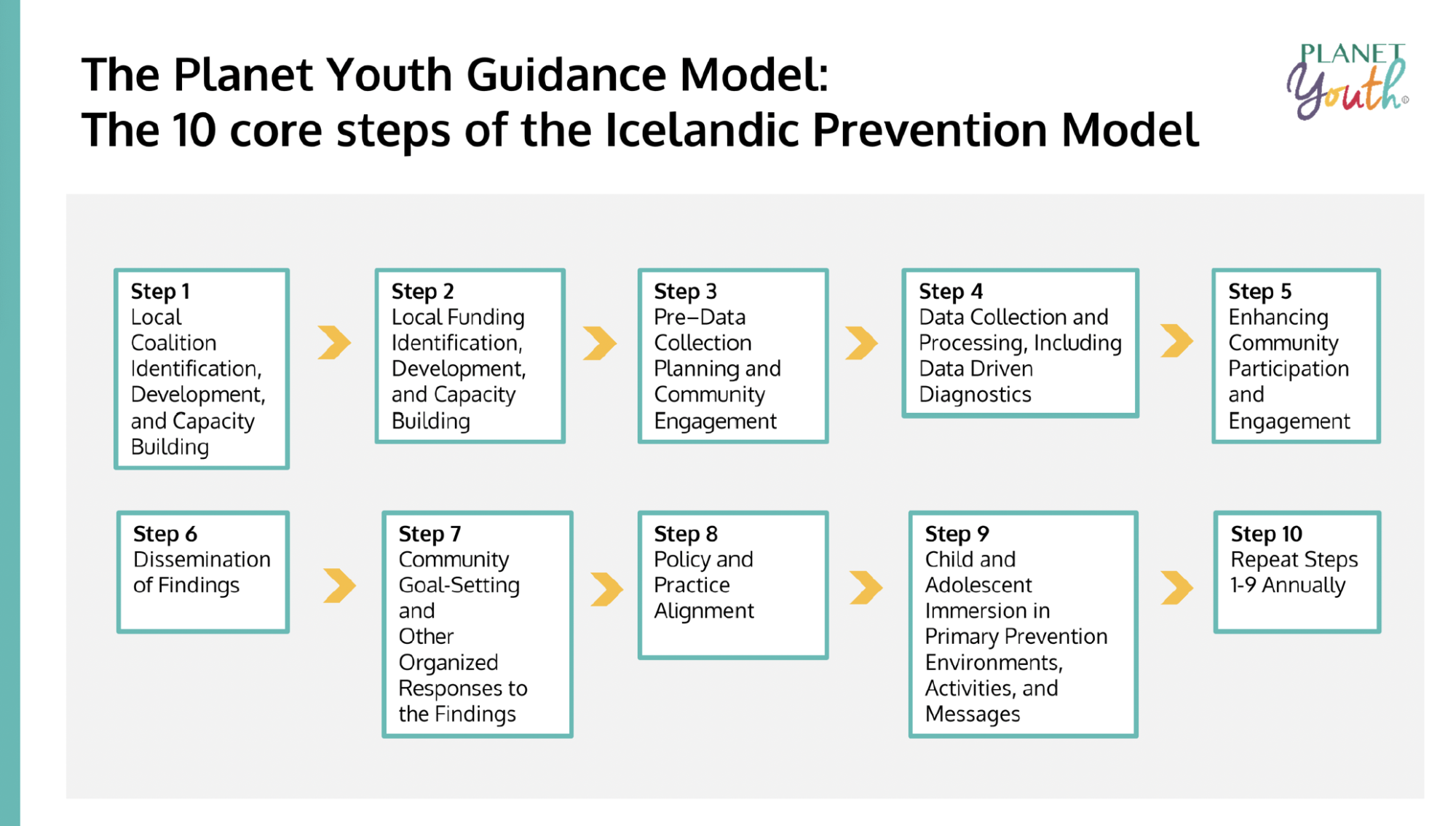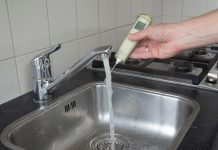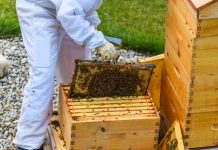
What is the Icelandic Prevention Model, and how does it work
The Icelandic Prevention Model (IPM) can be traced back to the 1980s. At the time, Reykjavik city councillors were concerned about high rates of alcohol and drug use amongst its adolescents, so they hired a group of external researchers to understand these behaviours better. Over time, this collaboration between local governmental officials and researchers strengthened, and evidence-based policies & interventions were enacted.[1]
The approach spread beyond the capital, and throughout the 1990s, teen-focused research and interventions took place throughout Iceland.
An early step in the process was collecting information directly from adolescents in schools. Reports of survey findings were then disseminated to the schools and community organisations. Local action plans were formulated, and preventative interventions were put in place, typically targeting the young person’s school life, peer group, family life or leisure time activities.
International buy-in
From the late 1990s to the 2010s, Iceland saw a marked drop in the proportion of adolescents smoking, using cannabis and being drunk[1,2]. In 2017, the BBC released a short film, “How one country persuaded teens to give up drink and drugs”.[3]
Requests from other countries came to the Icelandic team, and the IPM was packaged and commercialised under the banner of “Planet Youth”. Communities around the world continue to become Planet Youth partners and follow the 10 core steps of the IPM to improve the health and wellbeing of adolescents in their area (Fig.1).

To date, hundreds of municipalities in nineteen countries across five continents are following the Planet Youth program (https://planetyouth.org/our-partners/).
Planet Youth model in Ireland
In Ireland, the Planet Youth model was first adopted in 2018 in 3 counties in the West of the country. The survey was repeated there in 2020, 2022 and 2024. In the Northeast of the country, three more regions signed up, hosting surveys in 2021 and again in 2023 (Fig.2).

Four new counties will join the Planet Youth initiative in Ireland in 2025, bringing the total number of counties to 12 (of 26 in the Republic of Ireland).
The goals of the Planet Youth initiative in Ireland are to prevent drug-use in young people, to delay the use of alcohol, and to improve mental health of adolescents
Information is power
School-based surveys are a key part of the process. These differ from other surveys in that they are conducted every 2 years and with excellent coverage of young people in target regions. This coverage is facilitated by inviting all secondary schools in each region to participate, obtaining opt-out consent from pupils, and including non-traditional school settings (Youthreach centres).
The survey, while just one step in the wider intervention and prevention programme, is a key part of the process (Step 4, Fig.1). It gives adolescents the chance to describe their own lives and environments anonymously. It also informs local decision-makers what problems exist and what needs to change at each population level (e.g. county, town, school). Finally, this biannual data allows researchers to track the prevalence of health issues over time and investigate contributory factors[4-7].
Adapting the interventions
It is unlikely that public health interventions that worked for Iceland will work in Ireland. One reason for this is that much of the resource allocation and organisation of public services in Iceland occurs at the local municipality level. This allows local area information from adolescents to be acted on in a relatively “in-house” manner. This is in contrast to Ireland, where the state is responsible for most public services.
Several interventions have been rolled out in Ireland within the Planet Youth model. These have provided parents with guidance around substance use and health in their teenagers, educated adolescents on the importance of sleep, and increased leisure opportunities for adolescents outside of school.
National collaboration
Local authorities in Ireland, along with other statutory bodies, fund their Planet Youth initiatives independently of one another. However, since 2024 a national working group has formed to synchronise their surveys, interventions and long-term planning.
The goal is that with the spread of these local initiatives across the country and sustained funding, real improvement can be made in the health and wellbeing of young people in Ireland.
For more information on the Planet Youth process in Ireland visit: https://planetyouth.ie/
References
- Sigfusdottir ID, Soriano HE, Mann MJ, Kristjansson AL. Prevention Is Possible: A Brief History of the Origin and Dissemination of the Icelandic Prevention Model. Health Promotion Practice. 2019;21(1):58-61.
- Kristjansson AL, Sigfusdottir ID, Thorlindsson T, Mann MJ, Sigfusson J, Allegrante JP. Population trends in smoking, alcohol use and primary prevention variables among adolescents in Iceland, 1997–2014. Addiction. 2016;111(4):645-652.
- Kenny R. How one country persuaded teens to give up drink and drugs. UK: BBC; 2017.
- Silke C, Brady B, Devaney C, et al. Youth suicide and self-harm: latent class profiles of adversity and the moderating roles of perceived support and sense of safety. J Youth Adolesc. 2023;52(6):1255-1271.
- Silke C, Heary C, Bunting B, et al. Examining the relationship between adversity and suicidality and self-harm in Irish adolescents from 2020 to 2022. J Affect Disord. 2023;349:234-243.
- Dooley N, Power E, Healy H, Cotter D, Cannon M. Mental health of Irish adolescents following the COVID-19 pandemic: results from a population-based cross-sectional survey. Ir J Psychol Med. 2024:1-9. doi:https://doi.org/10.1017/ipm.2024.16
- O’Dowd T, Fleury R, Dooley N, et al. Risk and protective factors for cannabis use in adolescence: a population-based survey in schools. Ir J Psychol Med. (2025). doi:https://doi.org/10.1017/ipm.2024.28







